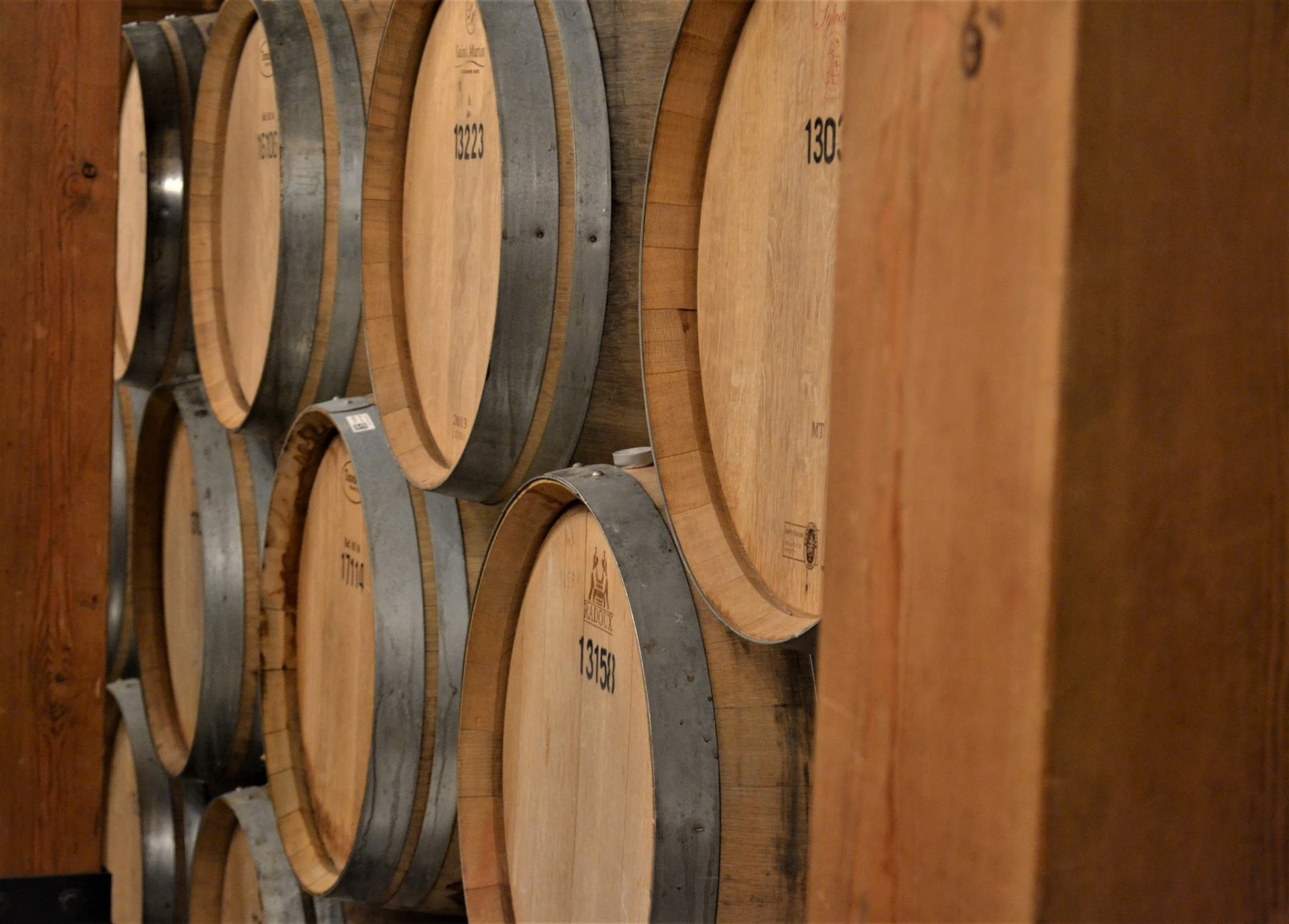This post may contain affiliate links, please read our disclosure policy.
Oak has been used in winemaking since people have been making wine! Discover the role of oak in winemaking. Cheers!

The Role Of Oak In Winemaking
Oak has been used in the winemaking for centuries. Aging wine in oak for a short time can give it subtle characteristics where aging it for an extended time will give the wine a strong oak flavor. It is a personal preference on if you enjoy a strong oak flavor in wine, either way it is interesting to learn why and how oak is used in winemaking. If you get the chance to actually see winemaking or barrel-aging in the process, be sure to! Many wineries will offer tours of their cellars, typically for a fee, but it is worth it in my opinion. My husband and I had the opportunity to taste wine directly from a wine barrel at Hall Wines in Napa and it was an incredible experience. We also walked through wine cellars that were centuries old in France, the actual process of winemaking is an art.
Oak trees suitable for barrel making grow about 75 feet tall and are harvested around 30 years of age. One tree will yield approximately two 55-gallon barrels. America and France contain the largest supply of barrel-quality oak forests. France contains around 40% of all the oak forests in the European Union, and around one-third of these forests consist of oak species suitable for cooperage.
How Oak Transforms Wine
At its simplest, wine is fermented fruit juice. It displays the natural flavors of the grapes from which it was made plus an alcoholic component. Many sweet, inexpensive Kosher wines exhibit this quality, some highly reminiscent of alcoholic grape juice. But when fermented or stored in oak barrels, a broad spectrum of new flavors and aromas are imparted to the wine.
These flavors can be fine-tuned by the winemaker and cooper to favor certain characteristics over others, and a modern winery will typically have barrels of different provenances and ages as well as different degrees of “toast.” Over time an oak barrel loses its influence and will become “neutral” within five years. So wineries must buy new barrels each year to obtain the effects that a new oak barrel will impart. A French barrel costs about $1,000. American barrels are much less expensive.
A Choice of Oak
All oak trees are not created equal. French oak is prized for its broad range of subtle flavor-enhancing characteristics. American oak is favored for its bolder effects, providing a stronger vanillin aspect and robust tannins. American oak is often used for bold, robust red wines such as Zinfandel and most Spanish red wines. Complex wines are often fermented and stored in French oak, adding to their cost.
Two factors determine the overall character of a barrel: drying and toasting. Kiln-dried oak barrels display a different flavor profile from air-dried wood. Barrels are set over a fire to toast the inside walls during their construction. The heating of the wood facilitates bending the staves into the desired shape and adds a new layer of flavors and aromas. In addition, the heavier the toast, the softer the tannins will be in the wine. A heavier toast also contributes flavors like spice, smoke, roasted coffee, ginger, nutmeg, leather, and smoked meats.
Light toast helps preserve the natural varietal flavors of the wine but at the expense of increased tannins. Most winemakers prefer a medium toast that offers the best compromise. Wines matured in medium toast barrels may display notes of clove or carnation, coconut, and tea.
To Oak or Not to Oak?
Modern tastes are shifting away from wines with strong oak influence. While un-oaked Chardonnays were rarely seen just a decade ago, they are now commonplace and, in many cases, preferred. Most New World wineries are opting for a lighter hand with oak, particularly in their white wines. Most white varieties are fermented and stored in stainless steel tanks.
The main exceptions are Chardonnay, which is often barrel-fermented and stored in neutral oak, and Alsatian whites, which are typically stored in large neutral casks. There was a movement afoot in the 1990s to barrel-ferment Sauvignon Blanc, particularly in California. While some Sauvignons are still barrel-fermented, particularly those labeled Fumé Blanc, the overwhelming number of Sauvignons worldwide are tank-fermented.
Do you wines that have been aged in oak or do you prefer steel barrels? Do you like the oak flavor found in some wines?
Be sure to check out Food Wine Sunshine on Facebook, Twitter, Pinterest, and Instagram for more wine tips, cocktails, healthy recipes, and fun things to do.









Comment section